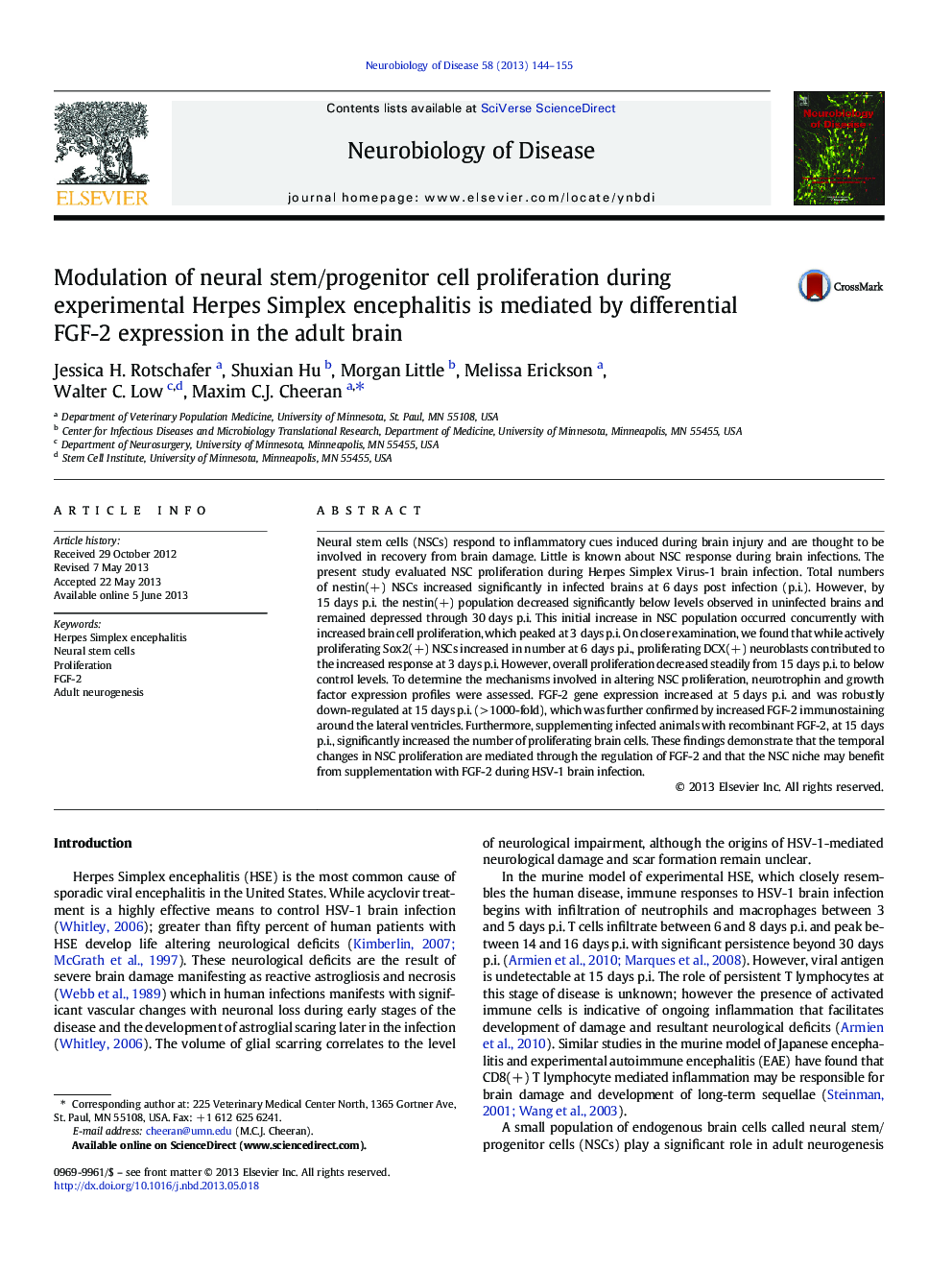| Article ID | Journal | Published Year | Pages | File Type |
|---|---|---|---|---|
| 6022224 | Neurobiology of Disease | 2013 | 12 Pages |
Abstract
Neural stem cells (NSCs) respond to inflammatory cues induced during brain injury and are thought to be involved in recovery from brain damage. Little is known about NSC response during brain infections. The present study evaluated NSC proliferation during Herpes Simplex Virus-1 brain infection. Total numbers of nestin(+) NSCs increased significantly in infected brains at 6Â days post infection (p.i.). However, by 15Â days p.i. the nestin(+) population decreased significantly below levels observed in uninfected brains and remained depressed through 30Â days p.i. This initial increase in NSC population occurred concurrently with increased brain cell proliferation, which peaked at 3Â days p.i. On closer examination, we found that while actively proliferating Sox2(+) NSCs increased in number at 6Â days p.i., proliferating DCX(+) neuroblasts contributed to the increased response at 3Â days p.i. However, overall proliferation decreased steadily from 15Â days p.i. to below control levels. To determine the mechanisms involved in altering NSC proliferation, neurotrophin and growth factor expression profiles were assessed. FGF-2 gene expression increased at 5Â days p.i. and was robustly down-regulated at 15Â days p.i. (>Â 1000-fold), which was further confirmed by increased FGF-2 immunostaining around the lateral ventricles. Furthermore, supplementing infected animals with recombinant FGF-2, at 15Â days p.i., significantly increased the number of proliferating brain cells. These findings demonstrate that the temporal changes in NSC proliferation are mediated through the regulation of FGF-2 and that the NSC niche may benefit from supplementation with FGF-2 during HSV-1 brain infection.
Related Topics
Life Sciences
Neuroscience
Neurology
Authors
Jessica H. Rotschafer, Shuxian Hu, Morgan Little, Melissa Erickson, Walter C. Low, Maxim C.J. Cheeran,
